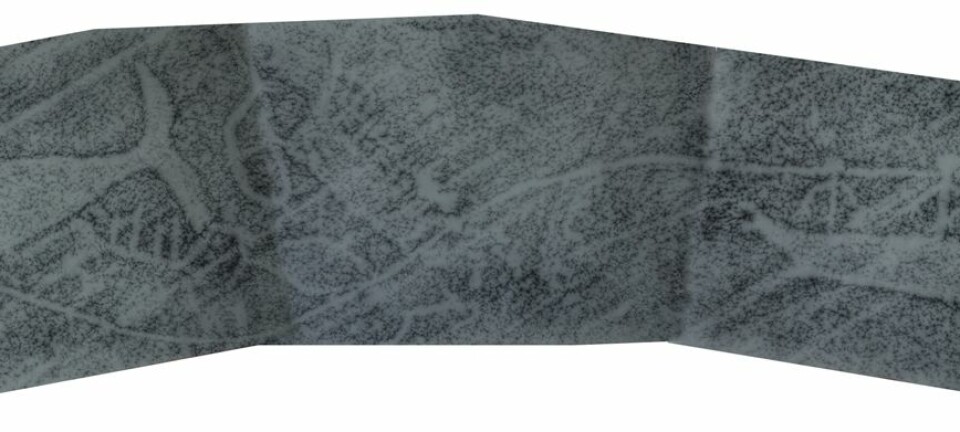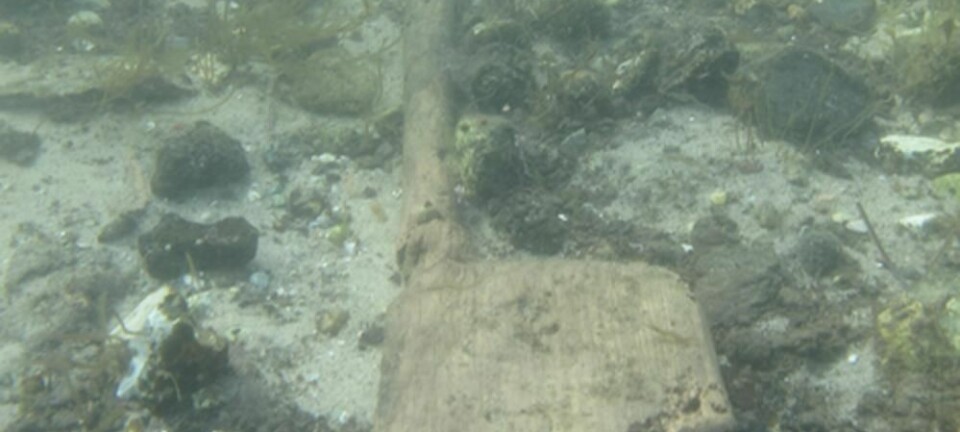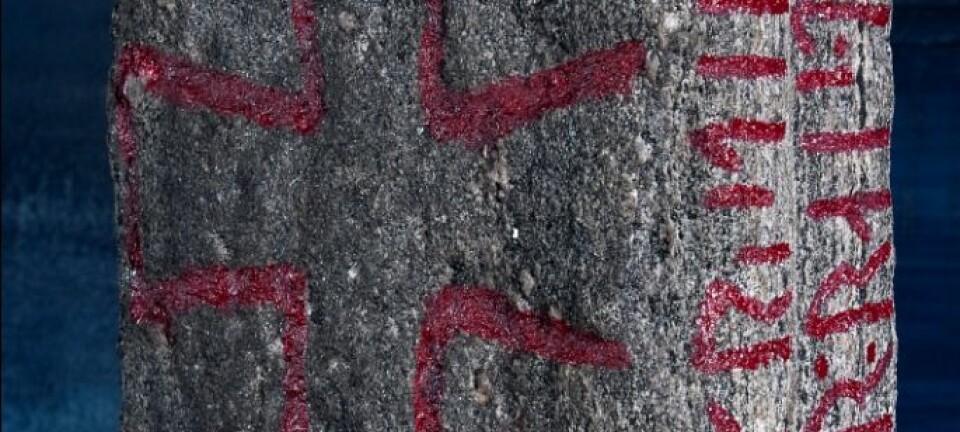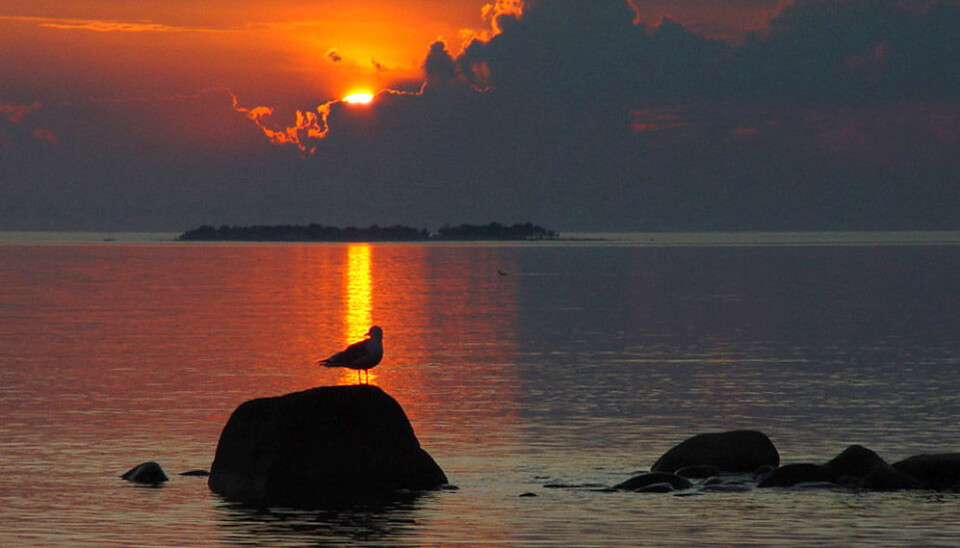
Skull on a stake reveals unknown rituals
A discovery in a peat marsh in Sweden reveals unknown rituals from the Stone Age. Poles with human heads on them had been planted in a pile of rocks in the peat, which was then a pond.
Eight thousand years ago warmer winds would ruffle the surface of Sweden’s second largest lake Vättern. The climate was milder back then.
Now the small pond nearby has become a peat marsh.
Archaeologists kneel over a strange pile of rocks. It’s buried beneath a layer of peat.
A new railway line is being constructed for freight trains and the tracks are coming through right here. So there’s no time to waste in charting this pile of rocks and whatever else might be uncovered.
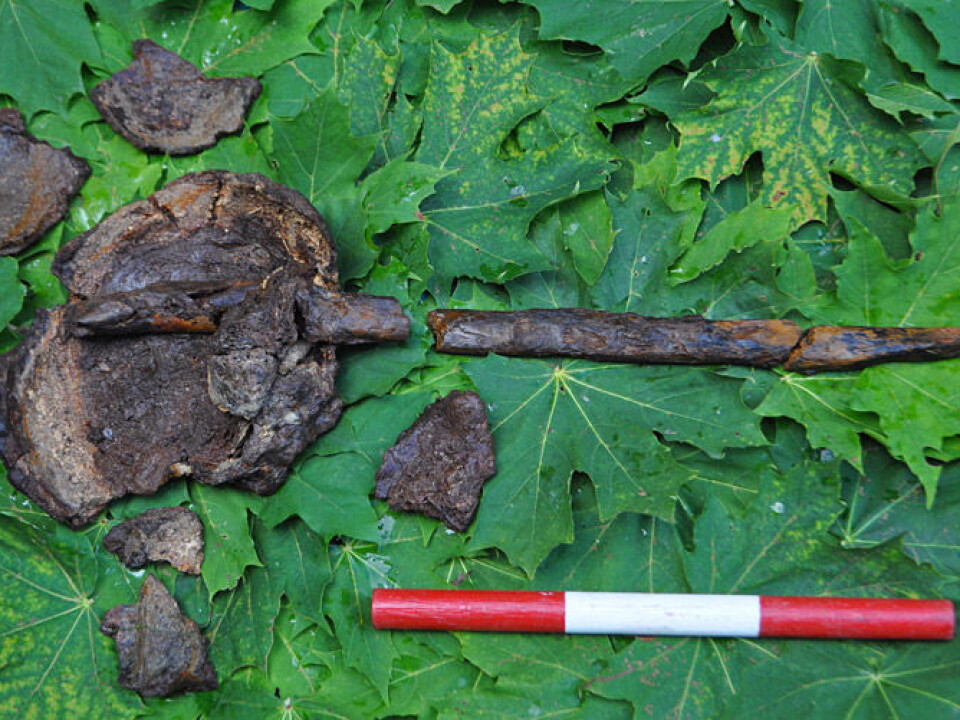
Fragments of animal and human bones have turned up, as well as tools made of horn, bone and wood. Even a carved wooden fish has been rescued from the dried up pond.
Uknown ritual
One of the archaeologists lifts up a skull. This cranium is attached to a stake. Nobody has seen the likes of this in digs from the Stone Age.
Fredrik Hallgren, project leader of the excavation, says several common earthen graves from this period have been found.
“But this is obviously a ritual burial in which the skull was detached from the body and placed on a pike.”
Burial mound under water

It’s also unusual to find a stone burial mound this old. Burial mounds like this didn’t become common until much later, in the Iron Age from 500 BCE until the Viking era. Its location at the bottom of a little pond is yet another mystery.
“The pile of stones is rather large, around 14 metres in diameter. It had to have been a big job to make,” says Hallgren.
In the Iron Age such mounds were placed at perspicuous sites, like monuments.
According to Hallgren this mound of stones was built at the bottom of a pond where nobody could see it. What was the point?
Women, men and infants
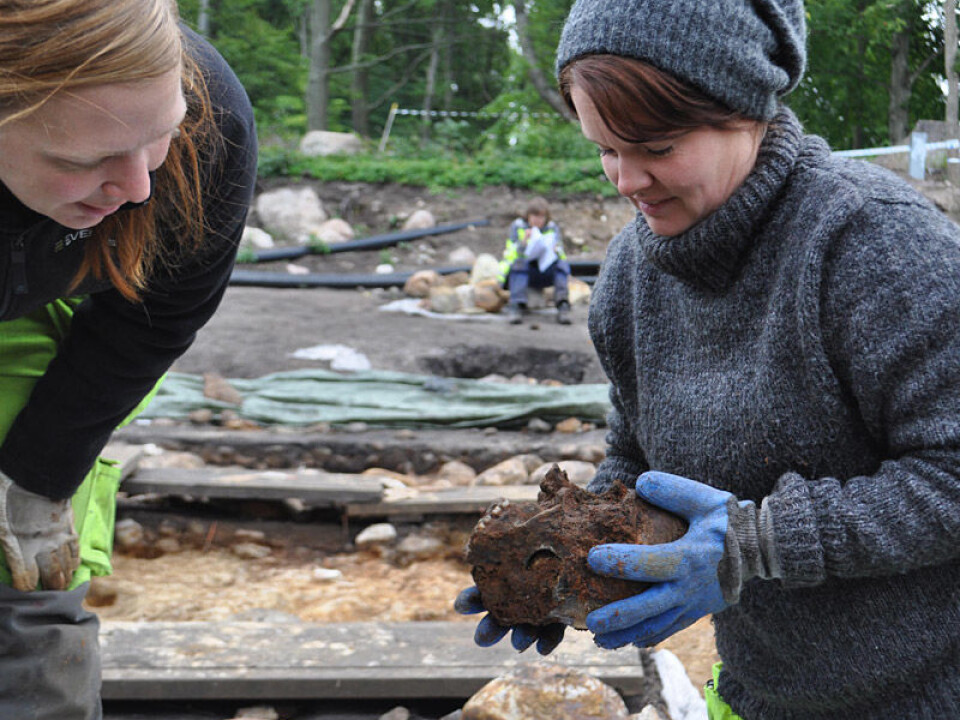
The archaeologists are now trying to find out more about the prehistory of the skulls. Experts in skeletal structure, osteologists, have already ascertained they belong to two infants and nine adults.
Hallgren explains the shapes of the adult skulls reveal they were men and women, young and middle-aged. Men have somewhat coarser facial features than women.
How were the heads removed from the bodies? Was this done immediately after death or had the corpses decomposed first?
Right now the findings point both ways.
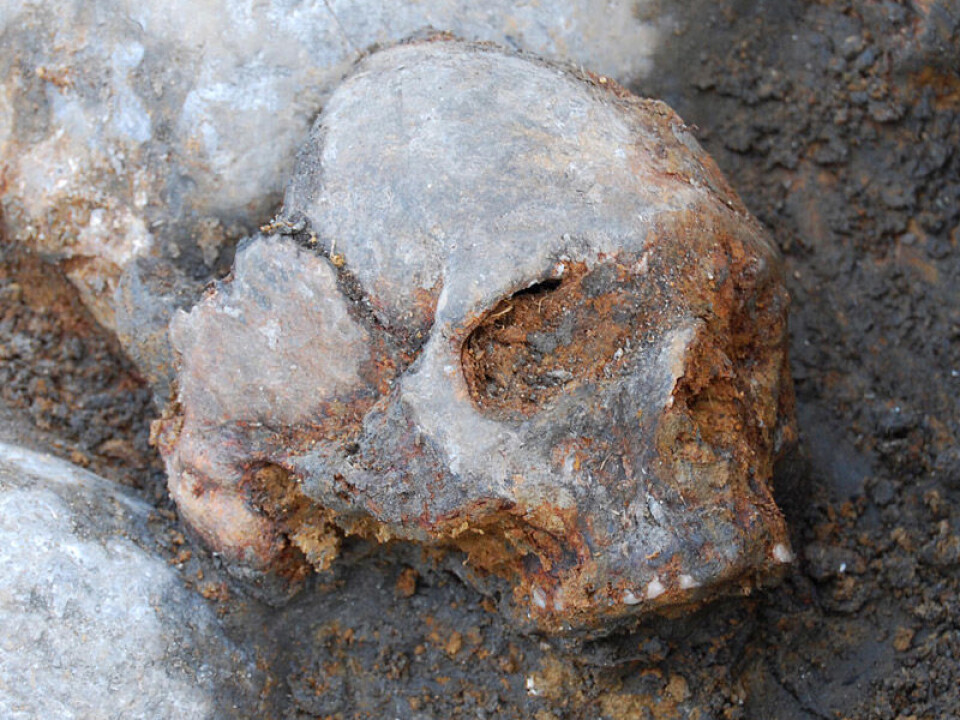
“It’s odd that we have only found one lower jaw. If a decapitation had taken place directly after death, while the muscles were intact, the lower jaw would have been in place on all of them,” says Hallgren.
One of the skulls shows scrape marks which indicate that it had been scalped and scraped free of facial tissue soon after death.
But Hallgren stresses that more detailed studies are required before this is certain.
Contrary to the others, one skull was found to contain organic material inside, which is probably brain tissue. This would indicate the entire head, with skin and muscle tissue, was placed on a stake.
Friend or foe
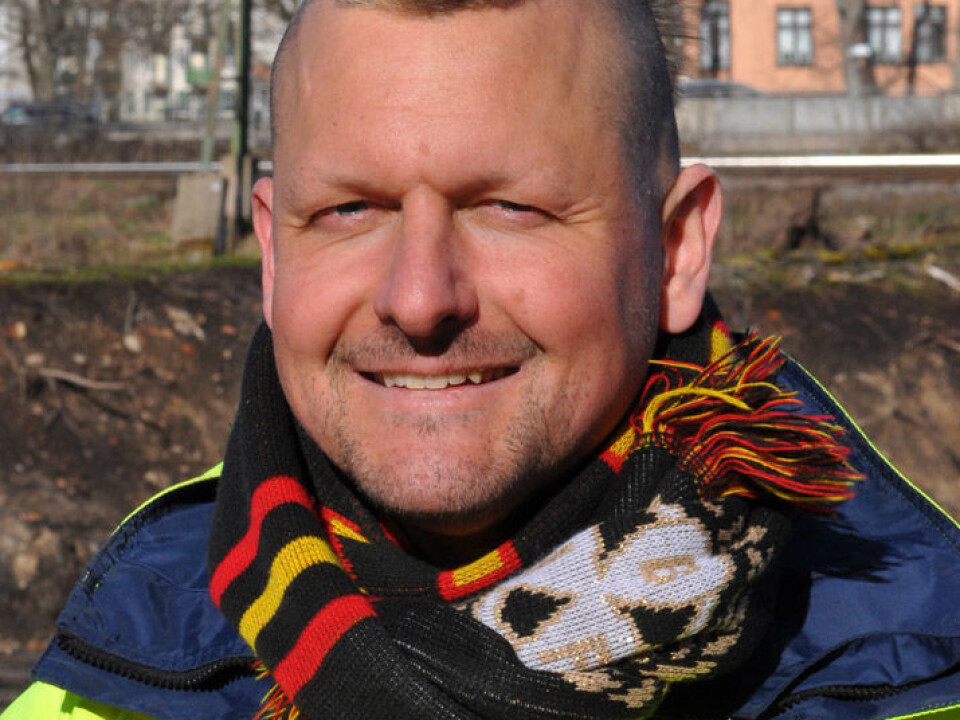
The skulls will now be studied more thoroughly.
Chemical analyses will determine quantities of the elements sulphur and strontium.
These will vary in accordance with the composition of the local bedrock and soil from site to site, revealing whether these belonged to local residents or to travellers, explains Hallgren.
If they aren’t locals they might be enemies who were killed in battle.
Their DNA will also be analysed to see whether the deceased were related to one another.
Hunters and gatherers
The pile of rocks and other discoveries from the peat marsh are from a period known as the Mesolithic – the Middle Stone Age. Prior to this, Scandinavia was almost entirely covered in ice and uninhabitable.
At this time people all over Europe lived as hunter-gatherers. Agriculture was only practiced in the Middle East.
Hallgren thinks the people living around Lake Vättern probably had a diet consisting mostly of fish. But they have also found the bones of brown bears, moose and red deer in the stone mound. Such animals are likely to have been important ritual prey for these folks.
He says the excavation work has currently drawn to a close. The new railway upgrade is being built through the area that has been studied.
In 2013 the old tracks nearby will be removed and archaeologists can start a new dig at that location to see what other mysteries lie hidden beneath the peat.
Translated by: Glenn Ostling
